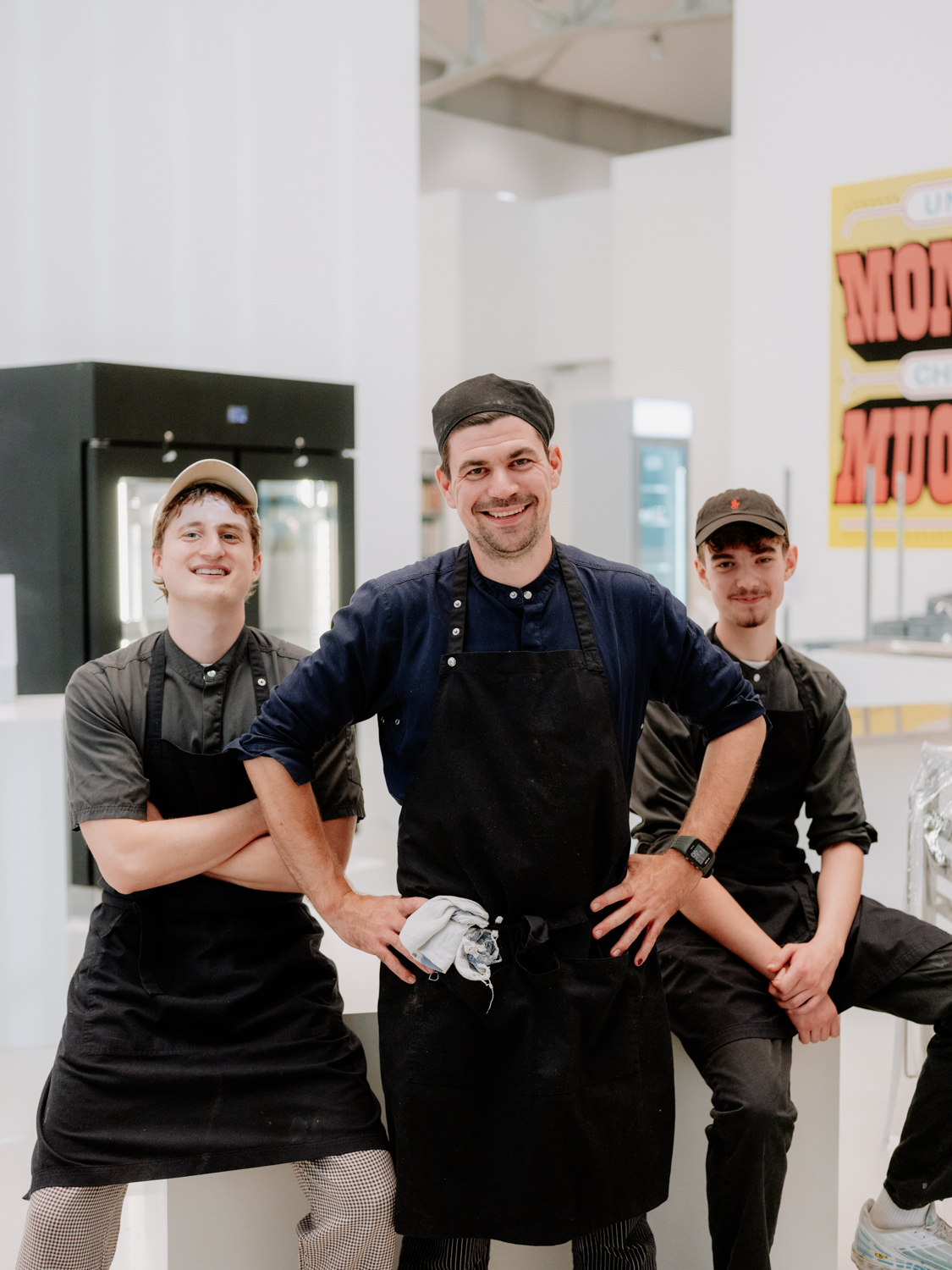Chicken or the Egg?
In the Bauhaus of the Seas fellowship project "Chicken or the Egg?", Sebastian Junge explores the role of chickens in regenerative farming and cuisine. Collaborating with regenerative farm Gut Haidehof in Wedel, Junge addresses issues arising from the industrialization of poultry egg production, designing sustainable and ethically sound alternatives to hybrid hens and roosters, and the difference their gender makes in the expected culinary role for the animal. During the preparation of chicken, eggs, and vegetables from Gut Haidehof, Sebastian Junge presents his visions within the School of Survival. A public discussion culminated in a shared lunch.
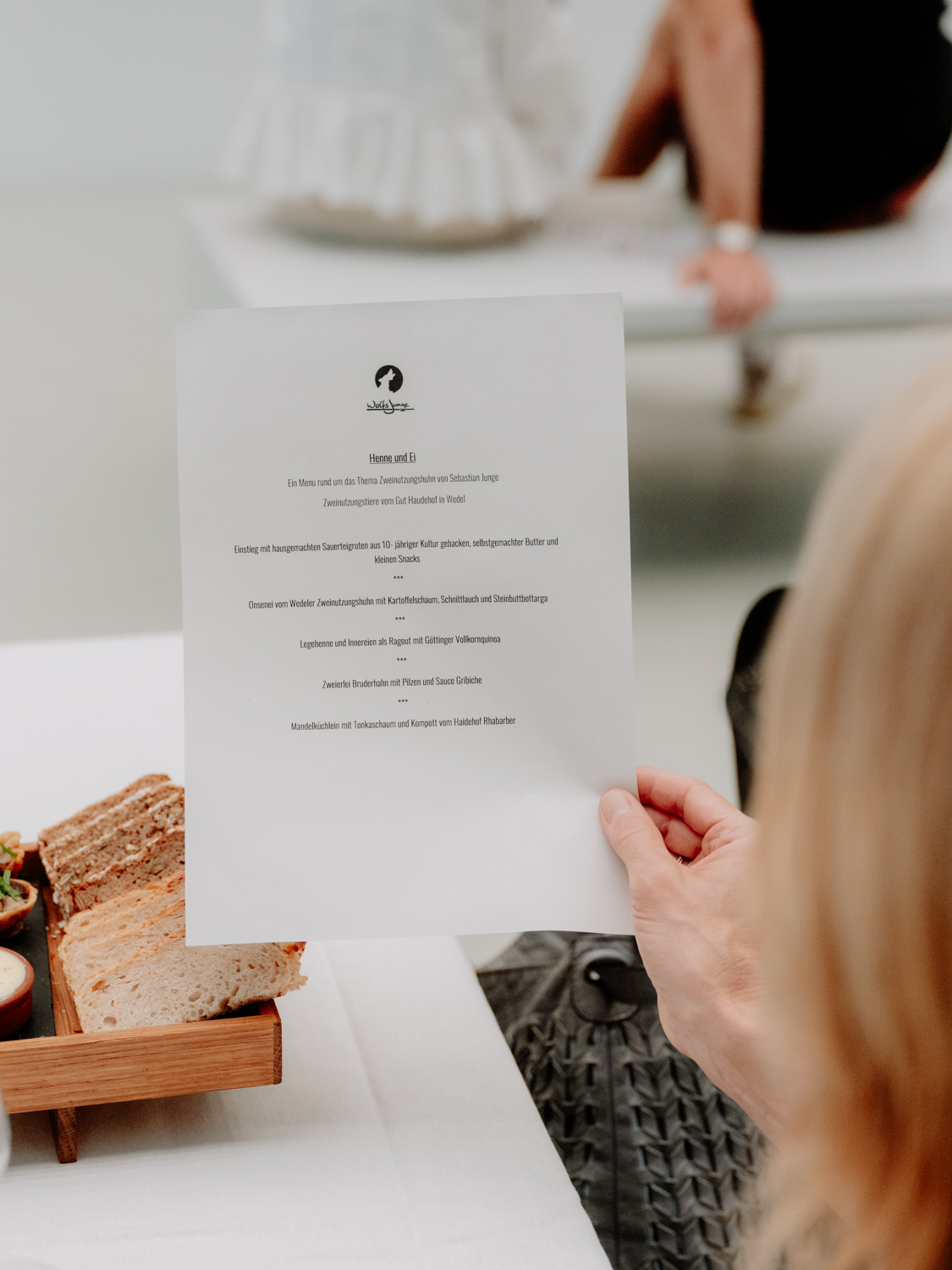
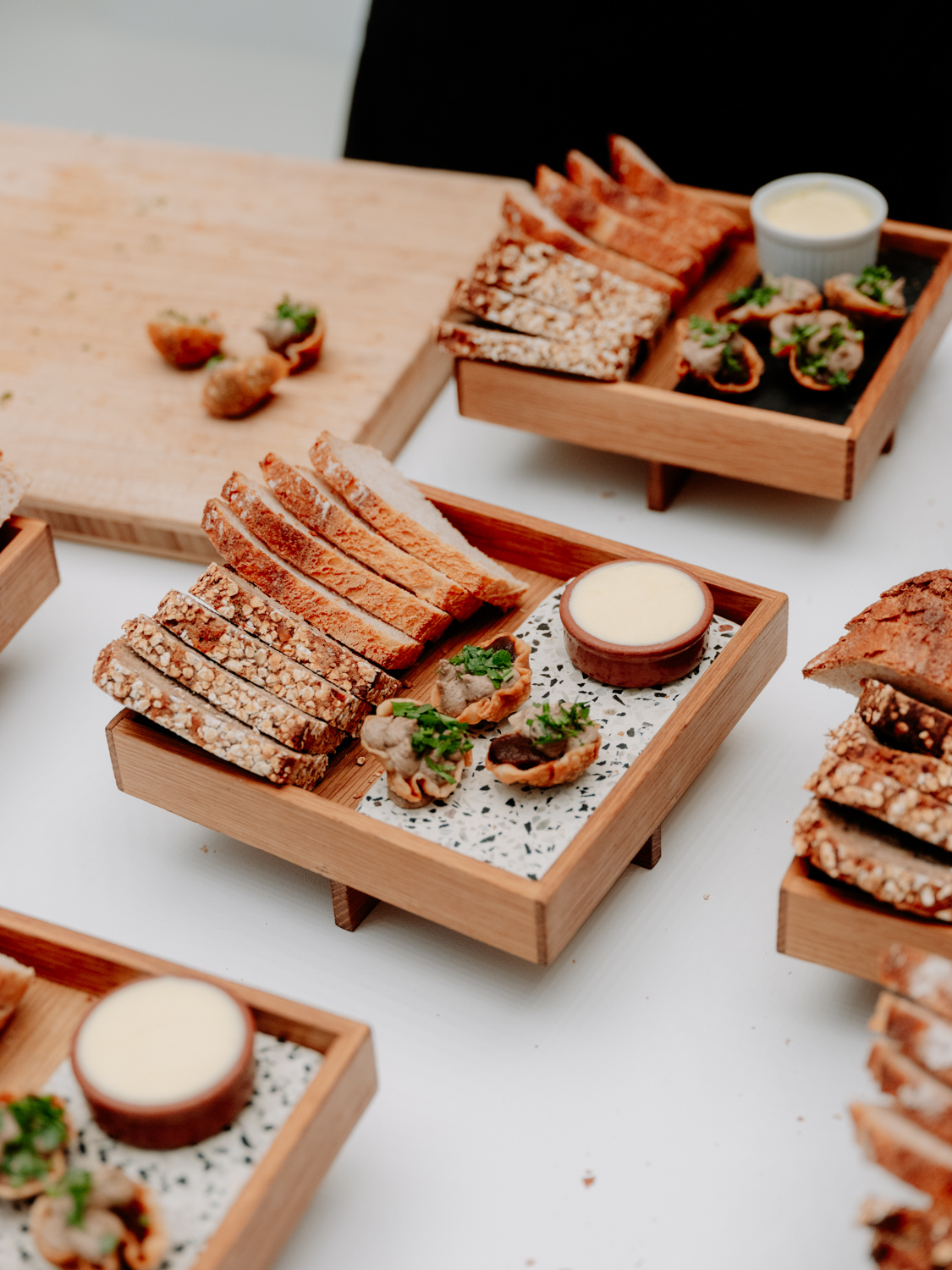
A conversation between Sebastian Junge, owner and chef of Green Michelin starred restaurant Wolfs Junge, and Katinka Versendaal on Sebastian’s culinary path, ideals and ambitions, ways of working and his fellowship in the Bauhaus of the Seas program.
KV: When and why did you decide to become a chef, and what does that route look like until here?
SJ: When I was about 14 or 16, I started working in a catering business where my brother worked next to school. I worked there every weekend and sometimes during the week, getting a lot of experience and earning good money while still in school. Similar to a lot of my peers, I didn't really know what to do afterwards. I graduated with the highest possible degree for university, but was quite unsure. So I decided to do a chef apprenticeship. At some point I ended up at Hotel Vier Jahreszeiten in Hamburg which was a really good option, and worked like a door opener to other possibilities.
During the apprenticeship, I was always wondering why none of the chefs could answer any questions about the products we were using. It was all anonymous produce from big retailers. You'd call them at night or use your list, and the next day the produce was there, but nobody could tell you anything about it. I was curious about this because I was always interested in where things came from.
KV: Being curious about where food comes from probably wasn't as common then as it is nowadays, right?
SJ: I started my apprenticeship in 2009, so like 15 years ago. There were totally different values in restaurants then. It was fancy to serve Wagyu from Japan or get the best tuna in town - that was what was valued, what was imported. Nobody was interested in where the carrot came from. Topics like sustainability, protein sources, zero waste - there was no interest in any of that.
After this apprenticeship, you decided to follow my curiosity. I worked in a couple of smaller restaurants, looked at different concepts, and was already working a bit with the slow food movement. I was really interested in sustainable restaurants, and worked at quite a few of them. I kept myself informed about food production and sustainable food production, working on skills to make food sustainable and understand what's behind it.
KV: Also to pick up some skills - I understand you're still using your butcher skills and make sourdough bread in the restaurant?
SJ: Basically the apprenticeship at the hotel was more about learning standard procedures for working in restaurants. It gives you the ability to work in restaurants all over the world. I could jump into a restaurant in Sydney or Hong Kong or wherever and be able to serve French-inspired food, work as a line cook, all that stuff. But all these skills - baking bread, butchering a whole animal, using everything from vegetables, fermenting, making your own sauerkraut - that was just not part of the education. I learned all that afterwards through traineeships, and by teaching myself. It's still not part of culinary education or practise, except if you're working in a restaurant like we are.
We work completely differently from an average restaurant. We think about dishes from the production side. We always consider the season, what animal we need to process, what we can make with it. For example, making goulash soup in winter is nearly impossible because there are no fresh bell peppers growing then. In our kitchen, goulash is considered a classical summer dish. This shows how we think about dishes and menus based on what's in season and what we have preserved, rather than just our ideas.
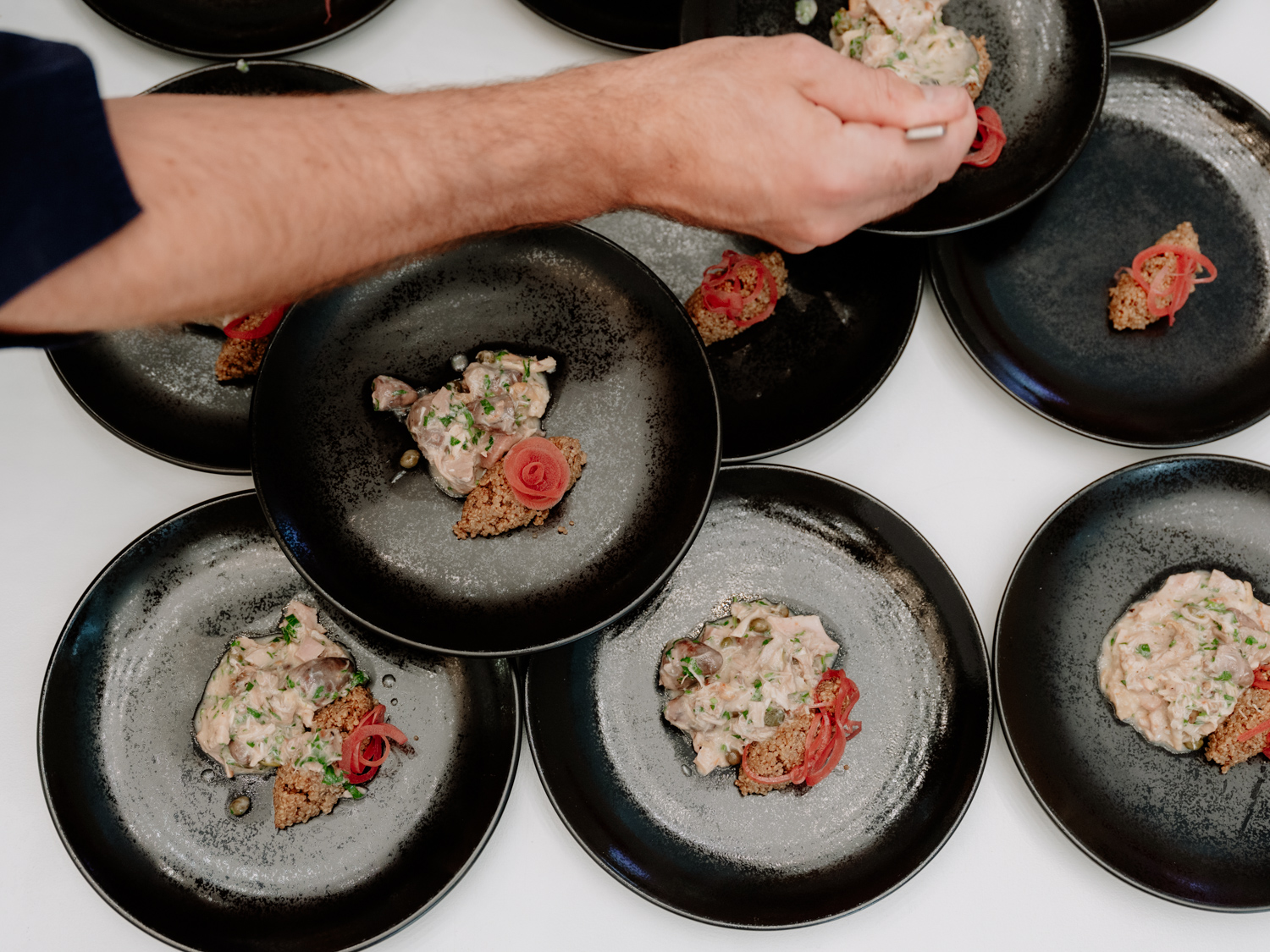
KV: Let's expand on that. The regular process starts out with imagining a dish and then finding ingredients regardless of time of year or location. How are you doing this differently? How do you find producers? What standards or rules do you have for deciding who to work with?
SJ: Basically, it's all about a local network I've grown over the last 15 years, especially when I was more active in the Slow Food movement and involved with the youth movement. Through previous workstations and traineeships, I've gotten to know many people working on farms, butcheries, bakeries. The most basic requirement is certified organic production, at least meeting the European standard, but preferably even better. It's important for us to know these people, understand their ideas about producing food, their passions, their values.
It is important to me that the working environment is healthy, especially regarding soil, but also the social environment. I look at who they're working with, how they treat the soil, staff, and animals. Are they working with passion and ideals, or is it just a job to them whether they grow corn or barley? They need to be aware they're working with our shared soil, which is the foundation for all of us. They must respect nature and animals and be trustworthy.
We visit farms a lot, especially before working with them. It's a lot of work just getting to know each other, understanding their interests, our interests, how we could combine them. I have many questions about producing specific things we might need. If everything fits - certification and mutual compatibility - we'll work with them. Products being linked to the region is also important, with most coming from within 150 kilometers around Hamburg.
KV: Then you have your little black book with producers, and I imagine the next step is bringing this into the restaurant and start making a menu. How do you go about that? Which producer do you approach first - dairy, meat, vegetables?
SJ: We have a basic stock of dairy produce that doesn't change much between menus - maybe just ordering less cream or butter, but we always have butter, cream, crème fraîche, eggs, flour. Then we talk to the producers and look at seasonal vegetables and where they're grown. Sometimes we compare prices because frequent small orders don't make sense. If we need lots of onions in one week, I'll check which supplier has the best price. We never negotiate prices, I trust they ask what they need for it, but I do compare offers and try to bundle orders.
For animals, everything is planned months ahead. Chicken, geese and ducks are planned nine months in advance, so I can tell my kitchen crew in mid-November to start preparing and thinking of dishes.
In December or January, I talk with them about the number of animals. With dual-purpose chicken, we calculate how many we would need for the restaurant, and how many eggs they would lay. Then we use that exact same amount - laying chickens and male chickens as well as eggs, throughout the year. That's the first concept to work with. After this, it's about working with the products. As everybody's using eggs in all kinds of recipes, we need to be aware of where we could save eggs, where maybe it's not necessary to use them. When the chicken comes in, we work on our recipes - how could we use this certain type of chicken? All of them need more cooking time. How could we do creative menus around it? Maybe diving into old recipes, what you can do with the feet, kidneys, feathers and all other parts.
KV: Having such high levels of planning, how often do you change the menu?
SJ: Our lunch menu, which is eight smaller dishes that can be combined into two or three courses, is more bistro-style and changes weekly. The evening menu is a tasting menu that changes multiple times during the week.
Because with ducks or geese, you don't just have breasts - you have a whole animal.
It's all about zero waste. Some dishes might be enough for 25 people, available Wednesday and Thursday, then changing Friday because it's done. We don't reproduce leftovers - we create something new. French toast, or "Arme Ritter" in German, only happens if there's leftover bread. No old bread means no French toast. That's why some dishes might appear for just one, two, or three days before they're gone.
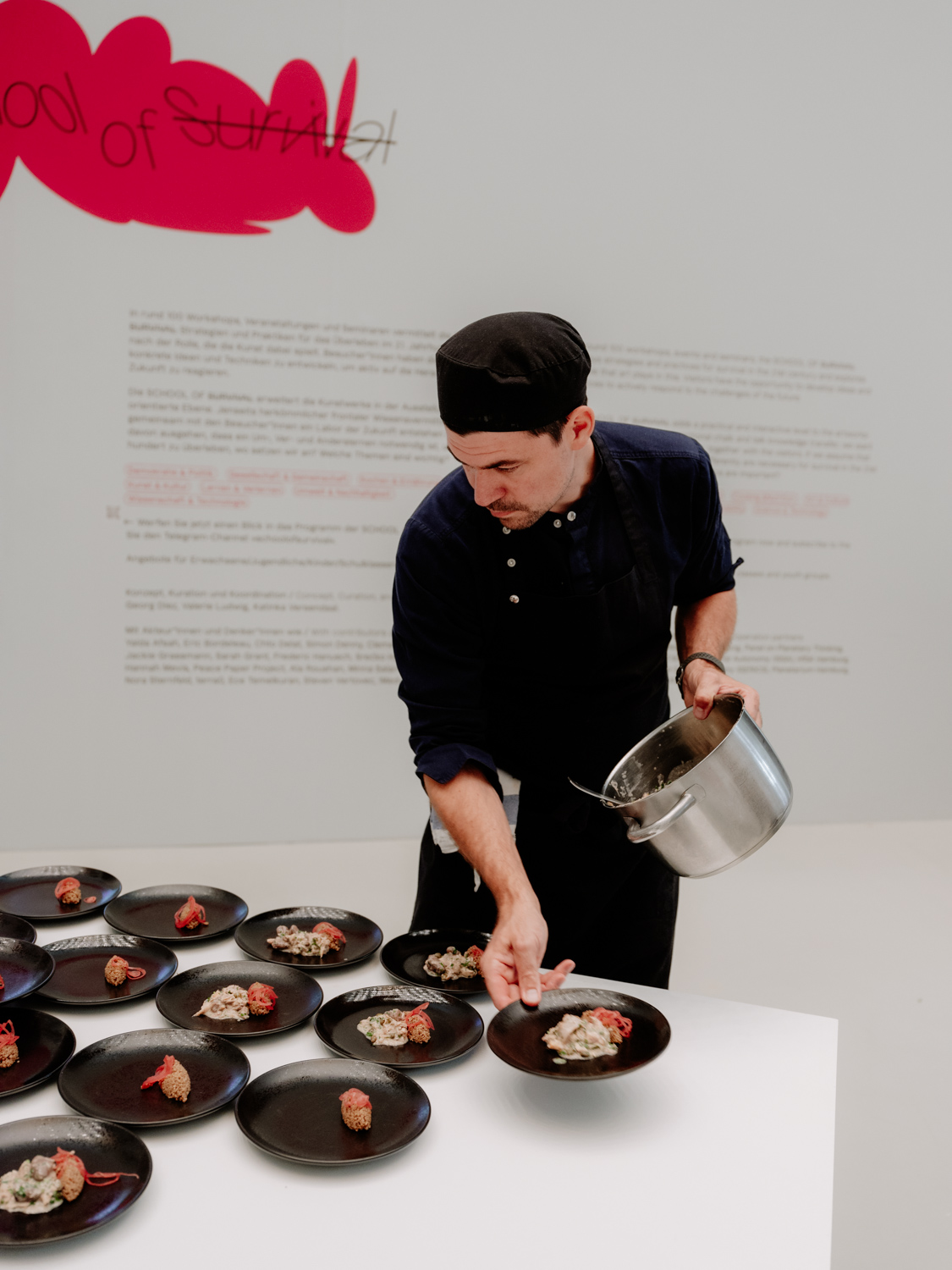

KV: In this fellowship project and your book you chose the topic of chicken. Can you tell us what is going on with chicken in the world on an industrial scale, and how your work tries to counter that?
SJ: Basically, our idea of agriculture and products is about small-scale agriculture linked to multiple areas of production and working on a farm. One of the really big issues and mistakes is specializing in one thing in agriculture - just doing chickens, just doing pigs, or just doing crops. This has led to poor soil, a poor working environment, poor food quality, and a very poor system overall. It's directly linked to industrial interests for controlling prices. If a farm only produces one or two main products, they have to accept whatever prices they're offered. They can't set their own prices, and if one product fails in the season, they're bankrupt.
Since chicken is one of the most industrialized meat productions you could think of, it is interesting to try to change this system from the bottom. Even in the organic chicken sector, you have the same problems as in conventional farming. We needed to look at what was going on, what the role of chickens originally was on a farm. There were a couple of chickens eating leftovers, producing eggs, controlling pests and improving the soil, and ready to be slaughtered at a certain point to be eaten.
In contrast, what the industry did was look at different chicken varieties and push them to the limit. They'd notice "Oh, this chicken lays a few more eggs than the others" and push it to lay an egg nearly every day. Same with cows - separating the ones producing lots of milk and pushing that to the limit. But what happened is all the other aspects that might be interesting for a small-scale farm - animals producing meat, being good to eat, being healthy and resistant, having a role at the farm - all of that got ignored.
It's not only that this specialization exists, but the good parts were excluded and it came with lots of trouble for the breeds. If you look at genetics in conventional chicken production, there are many problems with diseases, with not being able to handle their original environment. To break this small circle - as we still need eggs, but we don't want chickens that lay eggs for one year and then get slaughtered for pet food, and the male chickens are usually killed on day one - we were able to connect with the regenerative farm Gut Haidehof to make this dual-purpose chicken project.
KV: So how are chickens or husbandry in general included in regenerative farming, such as at Gut Haidehof?
SJ: We work with farms that have multiple products and areas, working with animals, crops, soils, fields, and people in a small working system where every animal and human has special tasks. For example, on a farm the pigs eat leftovers - harvest that's not good for sale, potato peels, leftovers from cheese production. That's their classical function on a farm - making something useful from leftovers. The task of a cow is to give milk by using grass and making healthy soil. They all work together in a system. Here, chickens have the ability to work on soil with their feet, plus they are getting rid of insects. When they're on a field for a certain amount of time, their feces gives nutrients to the soil. But you always have to handle it carefully so they're not too long on one part of soil, not too much nutrition for the field. Gut Haidehof works with a mobile chicken coop. They're able to move it up to twice a day, letting them feed from the field, finding insects. They can scratch the surface and find whatever food they want, while making some nutrition for the soil. They can live like its their natural habitat by scratching the surface, running around looking for insects, having enough space and sunlight to live in a healthy chicken community. Not being in too small a space where they're fighting the whole time and stressed from morning on, don't see sunlight.
KV: You always say that you have a double role - you're a chef as well as an activist. How do these roles live next to each other, and what are you fighting for?
SJ: I think they live perfectly well together because I don't have to compromise with the products I work with. I can decide what to use, and every dish I serve is like a small act of activism. I can explain where it comes from, who made it, why I chose this product or producer. It works well together, and I can promote it on podiums and social media. But I am aware that I can’t change the world with what I'm doing - I'm too realistic. I know 90% of people don't care and will eat junk food the next day, having nuggets or a bucket of chickenwings. But I can give inspiration to a few people to rethink things, to other chefs and restaurants in Hamburg to rethink their practices and where food comes from. That's my ambition and vision.
If I ever step away from running this restaurant, I'm sure I'll get more involved in politics - maybe with an NGO or a political party. I want people to understand these topics are all connected, and my concept is tied to a political idea. But it can be tough to explain that to someone who's just here for dinner.
KV: The communication about the future of food is often strongly focussed around being or becoming vegan. Yet, you are here fighting for the rights of the chicken, and simultaneously the eating of the chicken. Do you get pushback from the community?
SJ: It's a super complicated topic on different levels. You can't answer it in a few sentences, but I can give a few statements. First, I'm happy about everyone who really thinks about their own food and consumption, what it means for the world and people producing food. I'm happy for everyone making that decision. If I look in the supermarket, and if that would be my only source of getting food, I would be vegan too.
I'm happy about everyone eating vegan. I try to eat lots of plant-based food and use less meat products because I'm aware it's a big problem. We serve vegan food with pleasure, but for the bigger scale, it's necessary to involve animals in your agricultural system to sustain healthy soil. There's no better option than having animals running over your fields - a certain amount regarding your scale or place - to make the soil healthy.
If we don't concentrate too much on this religion of "I'm vegan and everyone else has to be" or "I'm a meat eater and I'll eat double the meat because you don't," we can focus more on everybody getting educated so they are able to eat healthy. The truth is that meat eaters eat way too much meat, and in my eyes, it's the wrong produced meat. If we focus on "less and better," we could live on a planet that's healthy and could feed way more people than now.
Also, these animals like chickens have been with humans for thousands of years. All these generations of chickens are geared to co-living; they have a relationship with humans. It's a relationship and a cultural approach. When people settled down and started keeping cows, chicken, and pigs, they started breeding special genetics for each specific place on Earth. It's like corn and many other crops too - it would not have evolved this way without human intervention. It's been co-evolving alongside humans. The answer isn't to stop eating, but to understand this as a relationship that comes with responsibilities for care.
